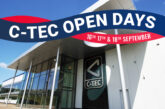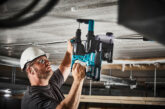
Latest BRE research into the investigation of fire fatalities in domestic dwellings in Scotland concluded the installation of interlinked smoke alarms, supported by additional recommendations, would be expected to result in a reduction in fire fatalities. Here James King, Connected Homes Director at FireAngel, explores how a hybrid network can achieve the highest standards of protection and compliance throughout residential properties, not only throughout Scotland, but the entire United Kingdom.
BRE’s last stage of collaborative research, ‘Fire fatalities in Scotland and recommendations to help reduce them – Final Phase: Review of Fire Investigation reports’, provides a comprehensive review of 126 fires in domestic dwellings throughout Scotland over a four year period, provided by the Scottish Fire and Rescue Service (SFRS).
The findings conclude that although the continuous development of new technologies may provide additional protection in the future, professionals have an opportunity here and now to apply existing technologies throughout domestic properties to help save lives and pave the way for a new approach to fire and carbon monoxide (CO) safety. These recommendations provide key learnings on how to achieve the highest standards in safety, whilst simultaneously tailoring the technology to meet each individuals’ level of risk, particularly the most at risk groups of society.
The findings documented that the installation of interlinked smoke alarms in bedrooms and living spaces, supported by greater communication between neighbours, relatives and agencies with the SFRS when an at-risk person has been identified, would be expected to save lives and could be implemented immediately.
Here the interlinking of smoke, heat and CO alarms throughout key locations of a domestic property, including lounges, bedrooms and circulation areas, plays a central role in achieving the earliest possible warning of a fire, as by meshing multiple devices together onto a private network, when one alarm sounds, they all sound.
This achieves the fastest possible alert of a potential fire or CO event, as every device on the network will mimic the chirp of the smoke or CO alarm, depending on the danger that has been identified. This level of protection can be cost-effectively accomplished by installing Smart RF compatible mains and battery-powered devices throughout a property, as by fitting a Smart RF Radio Module into each device, either upon initial installation or at a later date, every alarm can be wirelessly interlinked together in an instant.
A hybrid system can also be created as both mains and battery-powered smoke, heat and CO devices can be meshed together onto a single network, which eliminates the requirement for costly and time consuming channelling or trunking. This reflects the core findings of the BRE’s report, which evidences that more must be done to utilise existing technologies in the most effective way to provide the earliest warning of a possible fire of CO event.
By installing devices that feature connected technologies, the system can be continuously expanded and adapted to include additional safety products, as and when required, to provide the highest possible levels of protection, particularly for vulnerable individuals who present the highest potential risk.
Whilst achieving the earliest possible warning of a potential fire or CO event is integral to these findings, successful communication was also identified as being another critical factor in reducing fire fatalities in domestic dwellings. The report evidenced that providing warnings to a locally linked mobile phone to a neighbour or other ‘sentinel’ would be expected to lead to a quicker intervention and likely more positive outcome for a proportion of the 82% of cases.
The two recommendations for interlinked alarms and increased communication can be achieved through the creation of hybrid networks, as the very nature of an interlinked system facilitates continuous communication through the remote monitoring of every alarm across a network.
As alarms feature Smart RF technology, a Connected Gateway can be added to an existing network to provide remote real time monitoring of every alarm on the network. Device data can be accessed via a free app, which can send optional notifications regarding the system’s status to a nominated individual. This provides transparent and consistent clarity regarding the level of protection installed throughout a domestic property in relation to the risk level of the individual residing within it.
Whilst the BRE report is specific to Scotland, it presents professionals across the United Kingdom with the opportunity to upgrade the level of fire and CO safety they are installing throughout domestic properties by utilising intelligent connected technologies to create hybrid networks that cost-effectively achieve the interlinking of all devices and effective communication to provide the earliest possible warning.
For more information on FireAngel’s advanced Specification Range, click here or contact your local Specification Manager.








